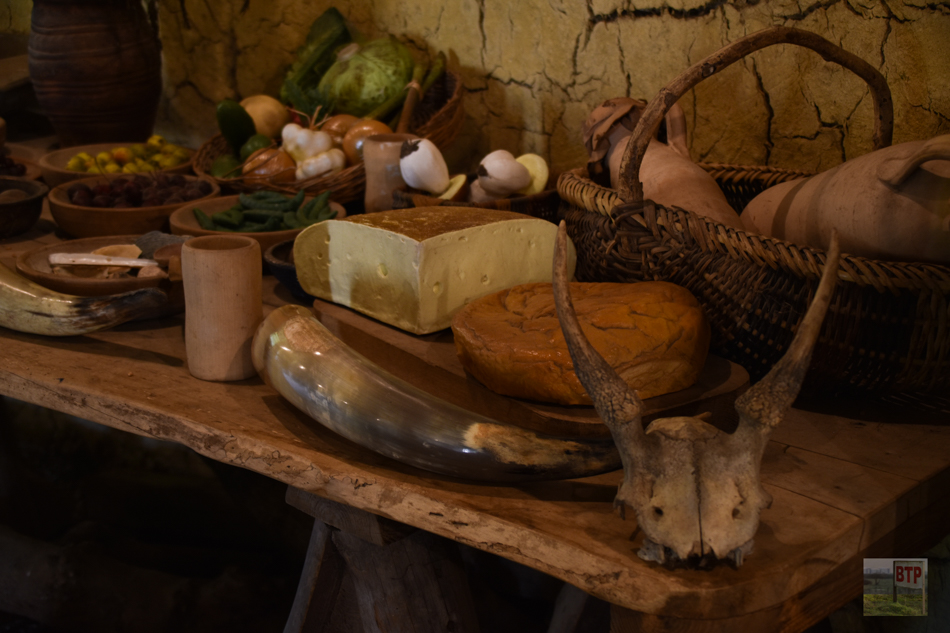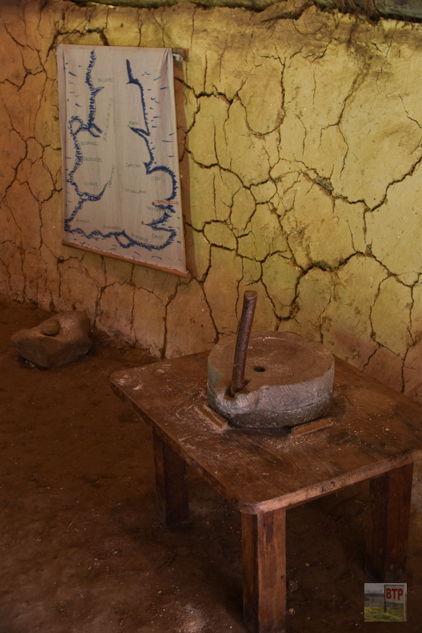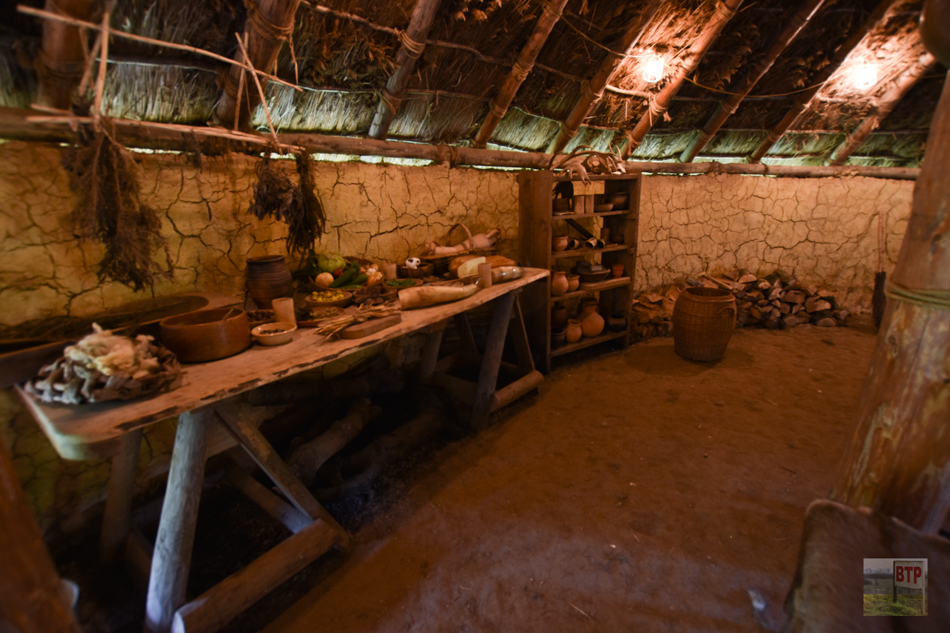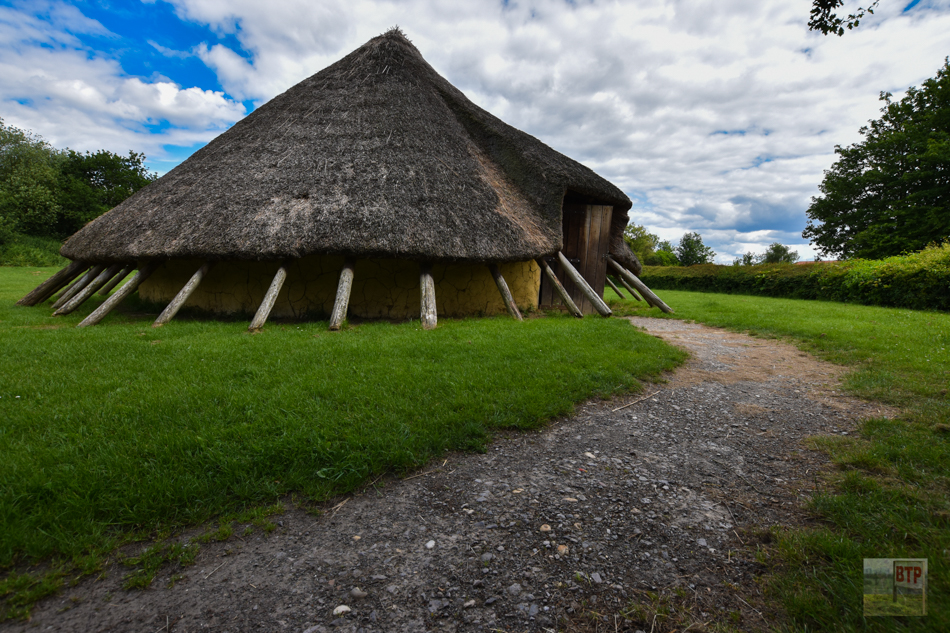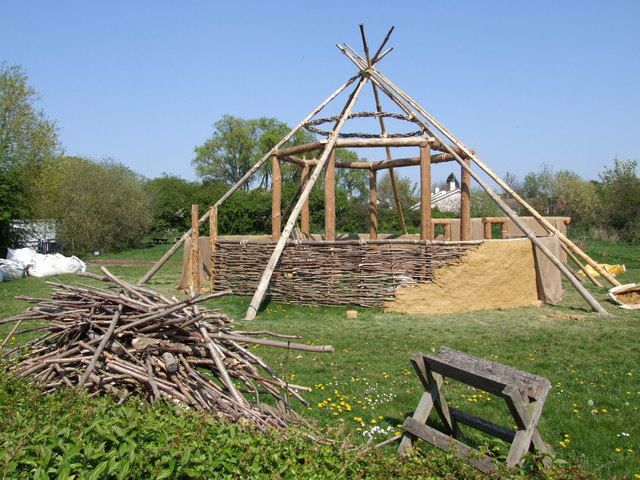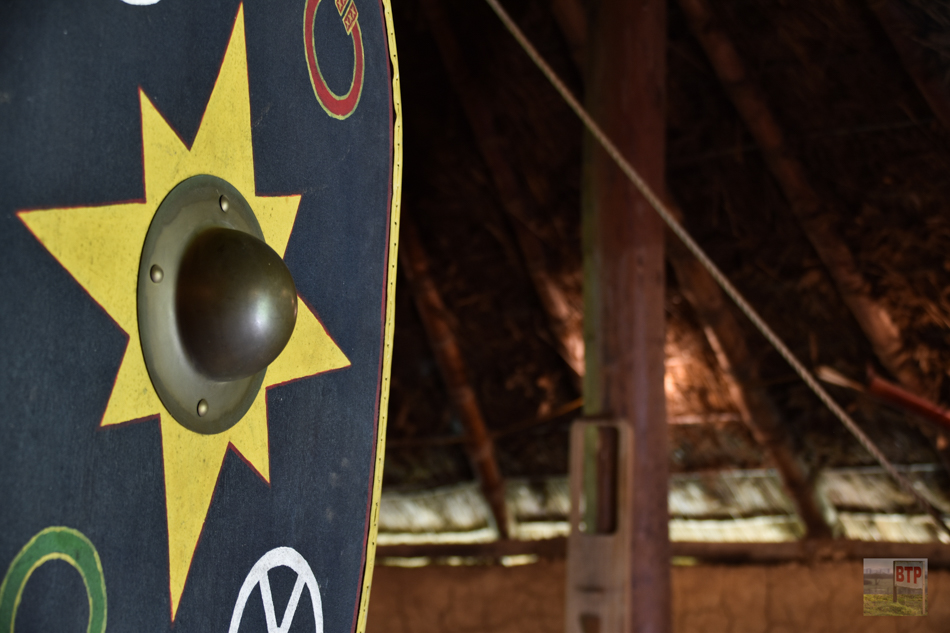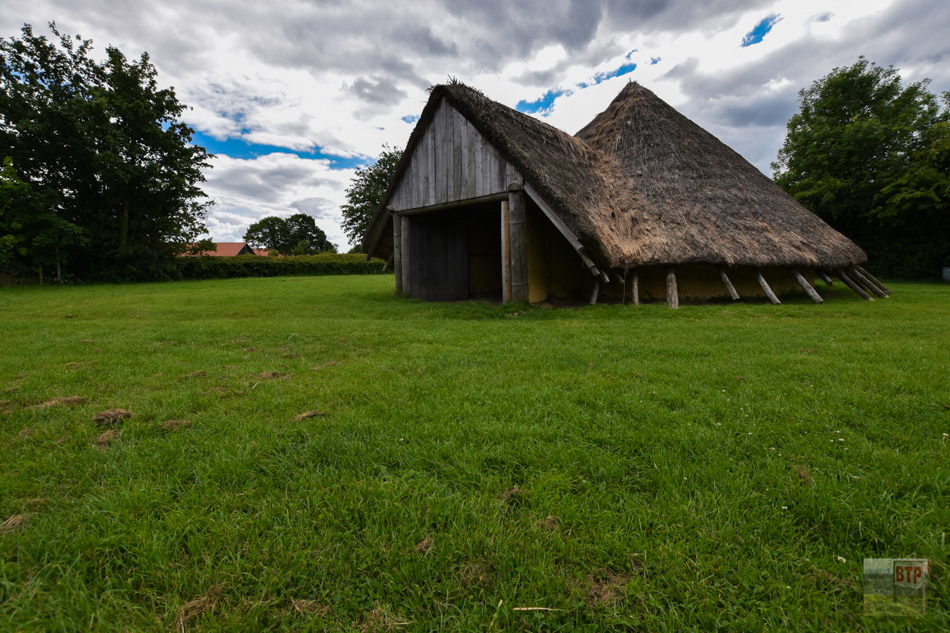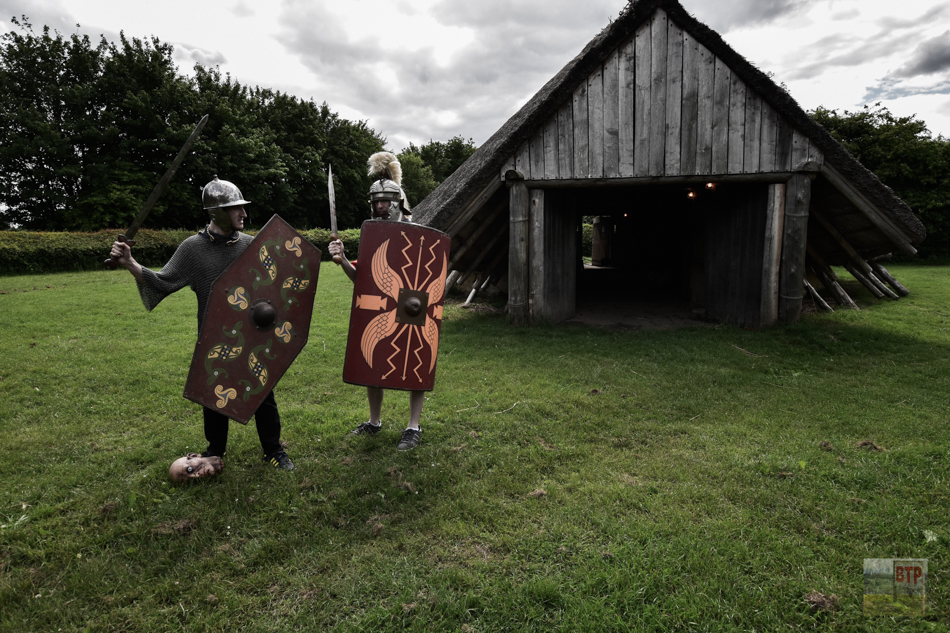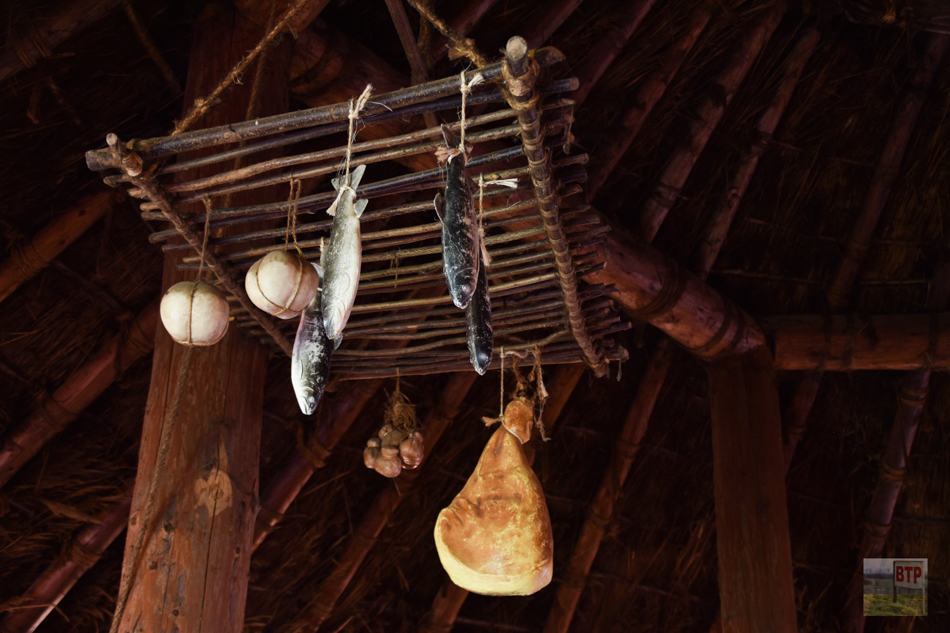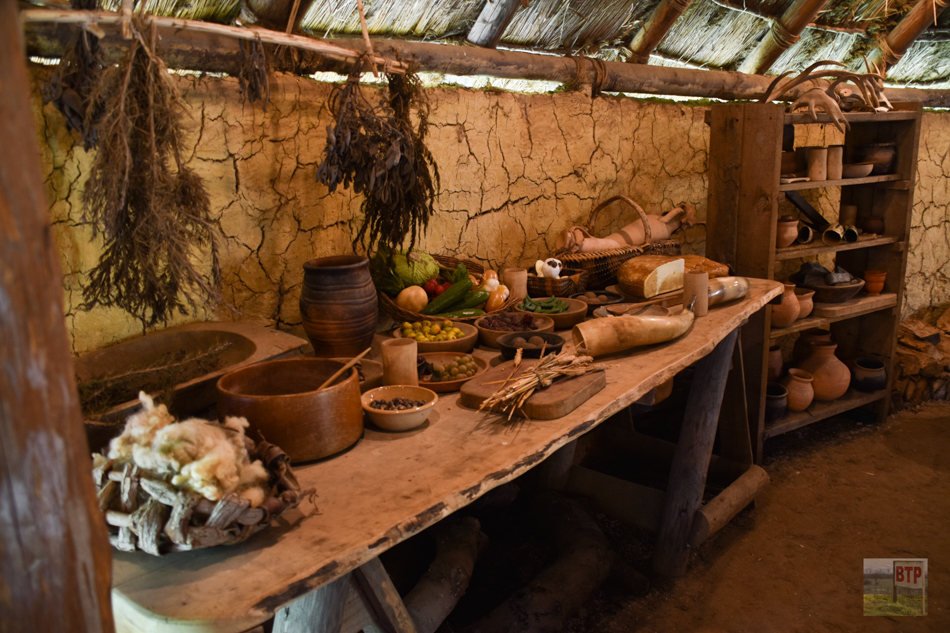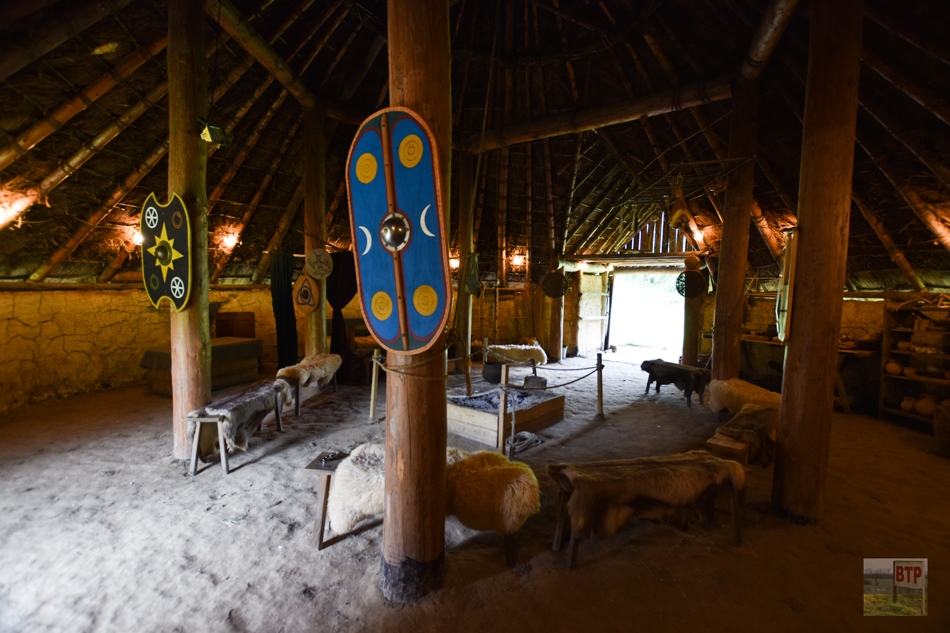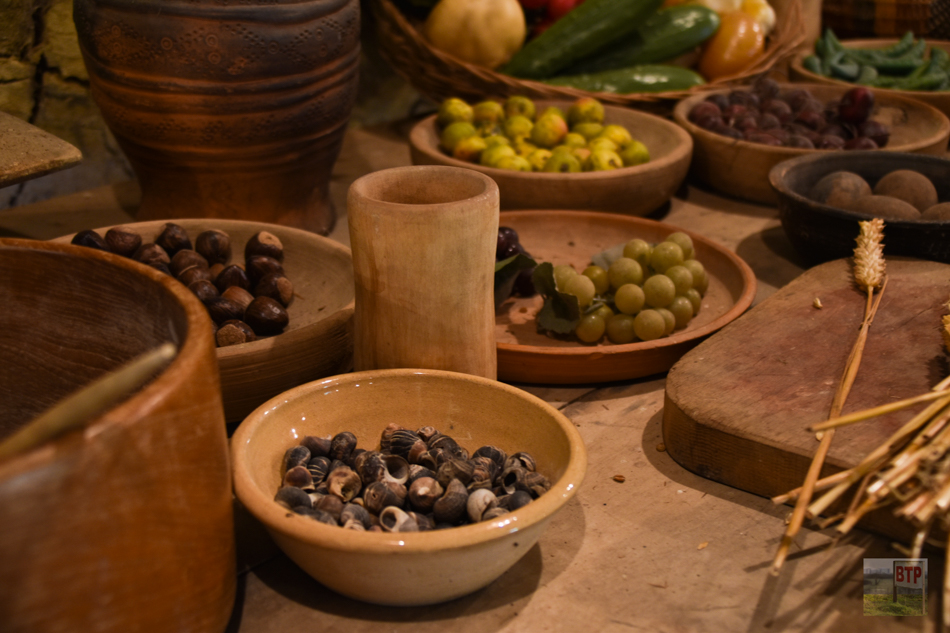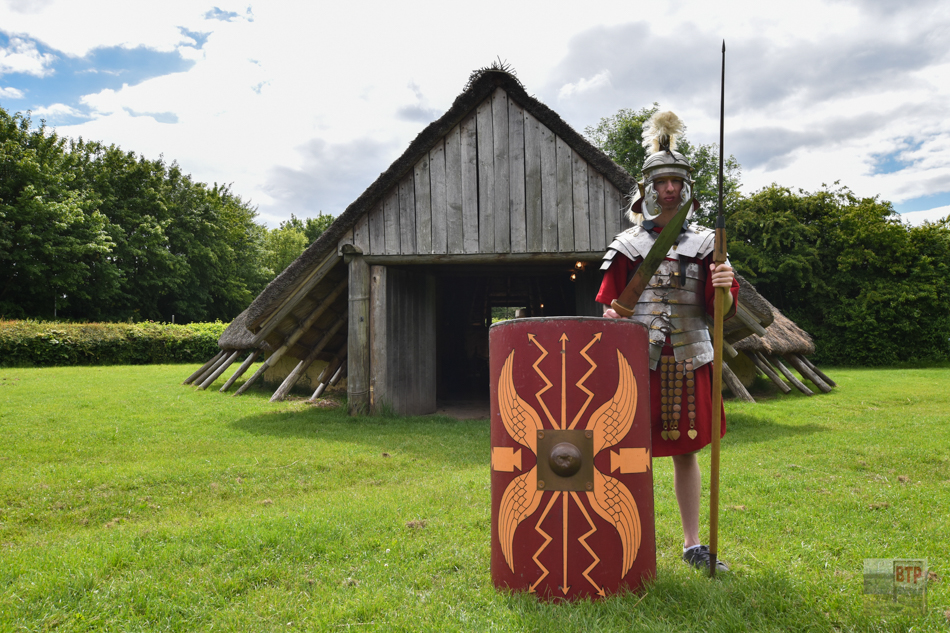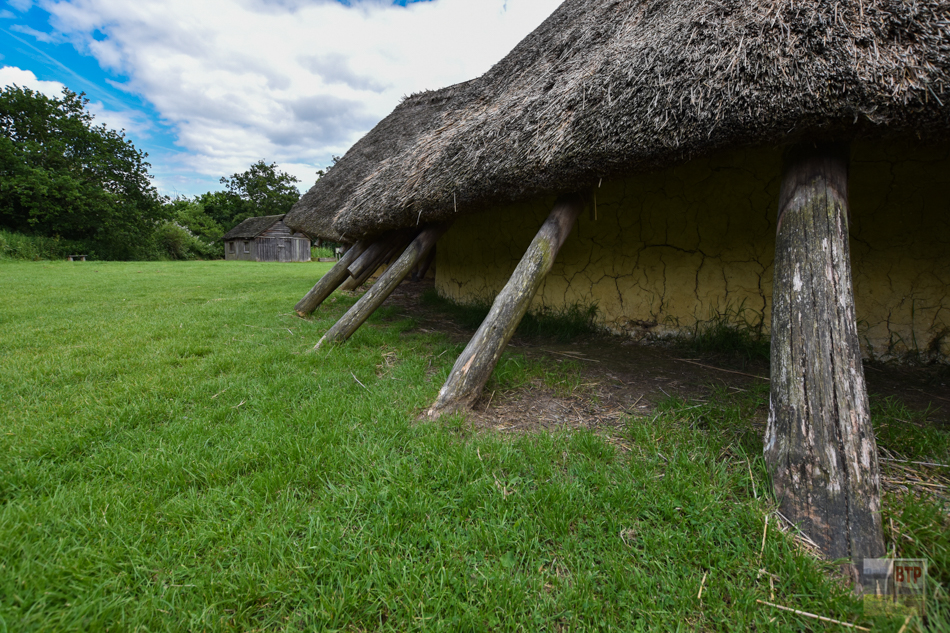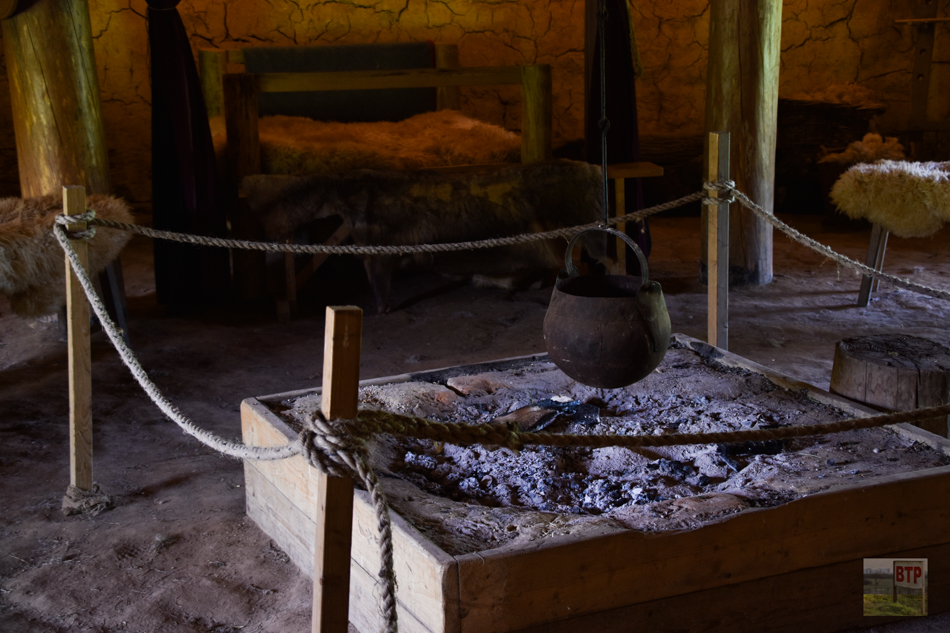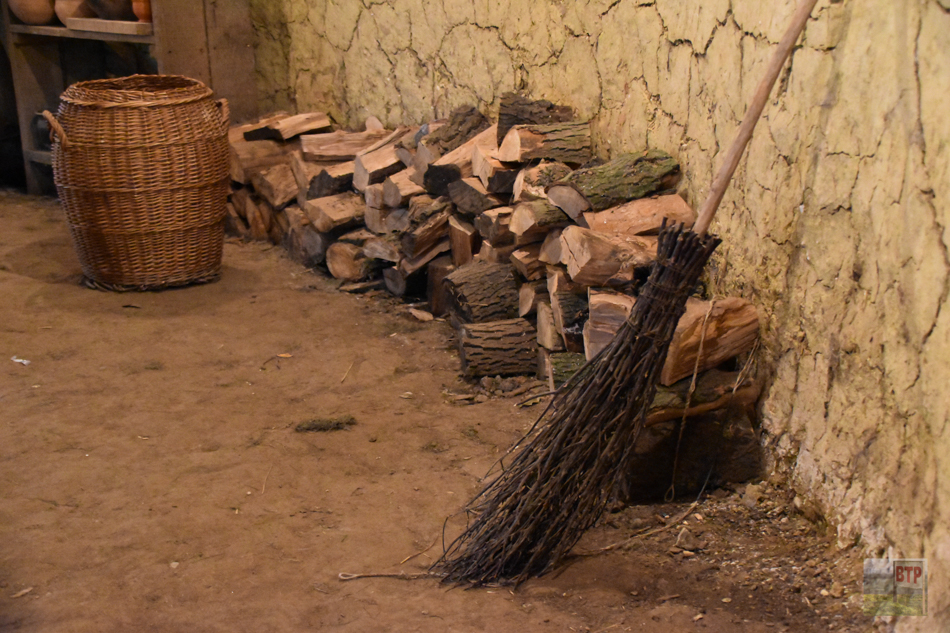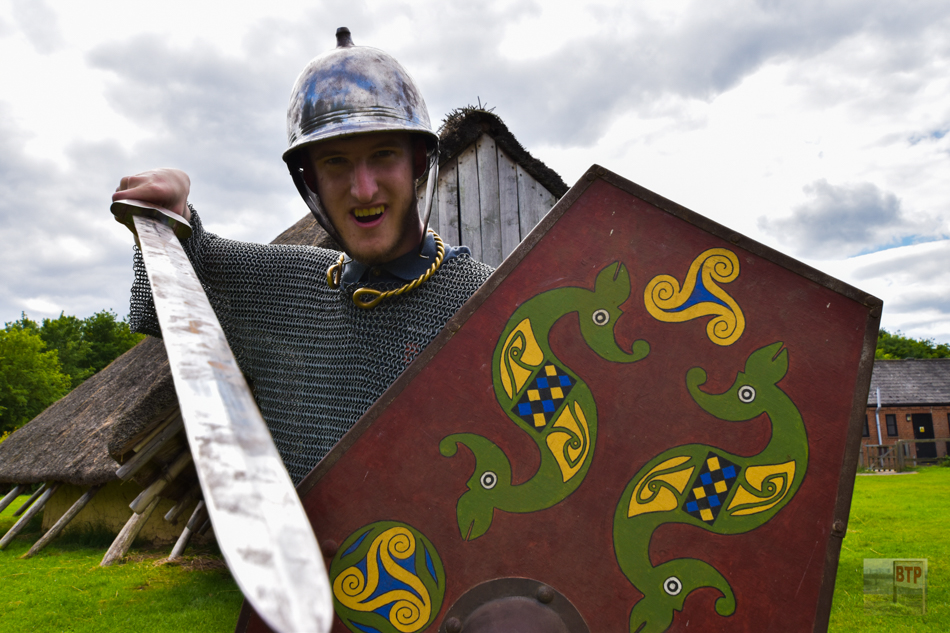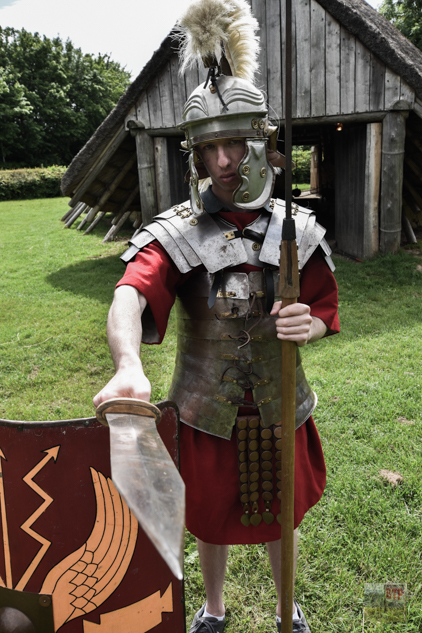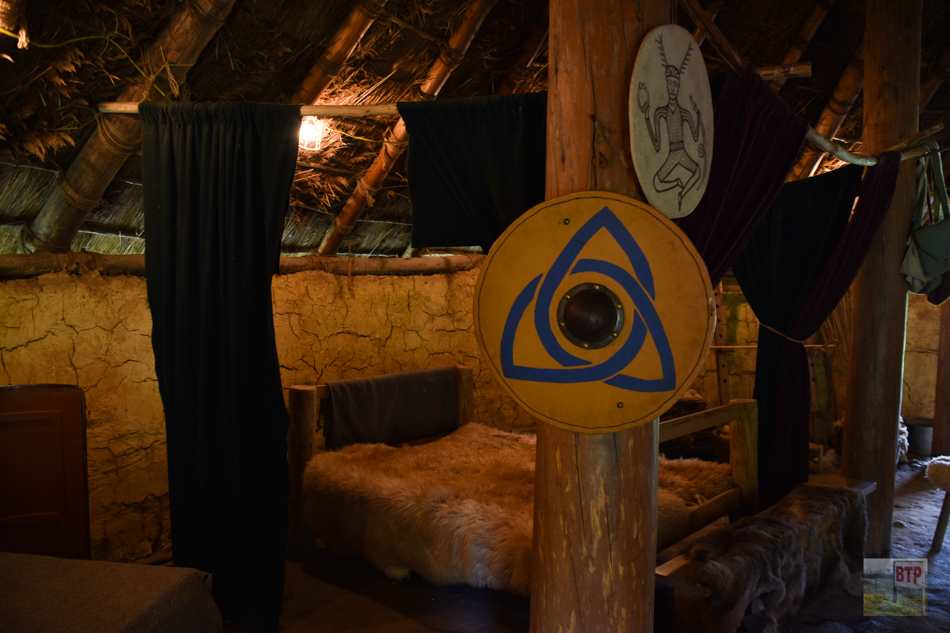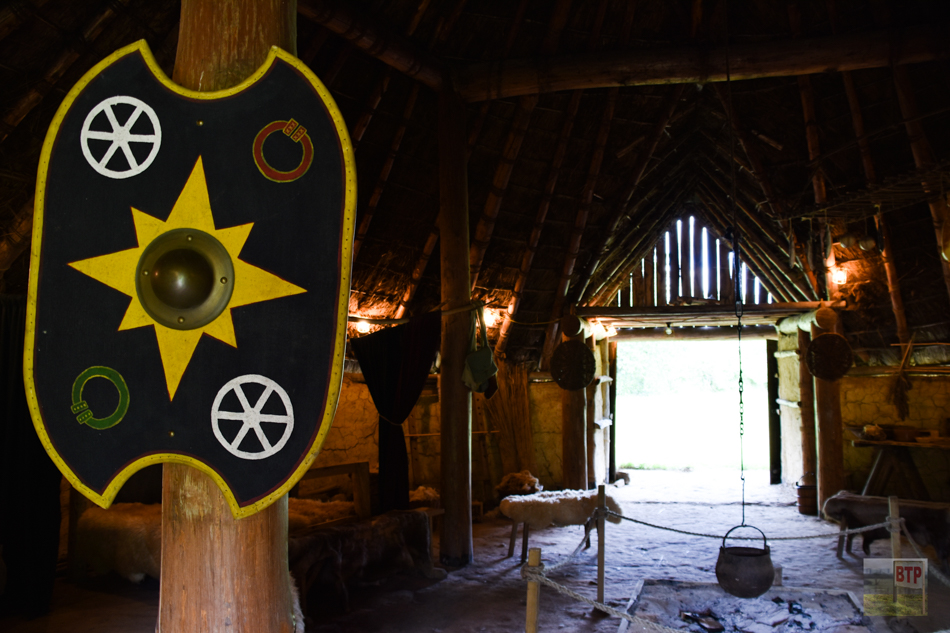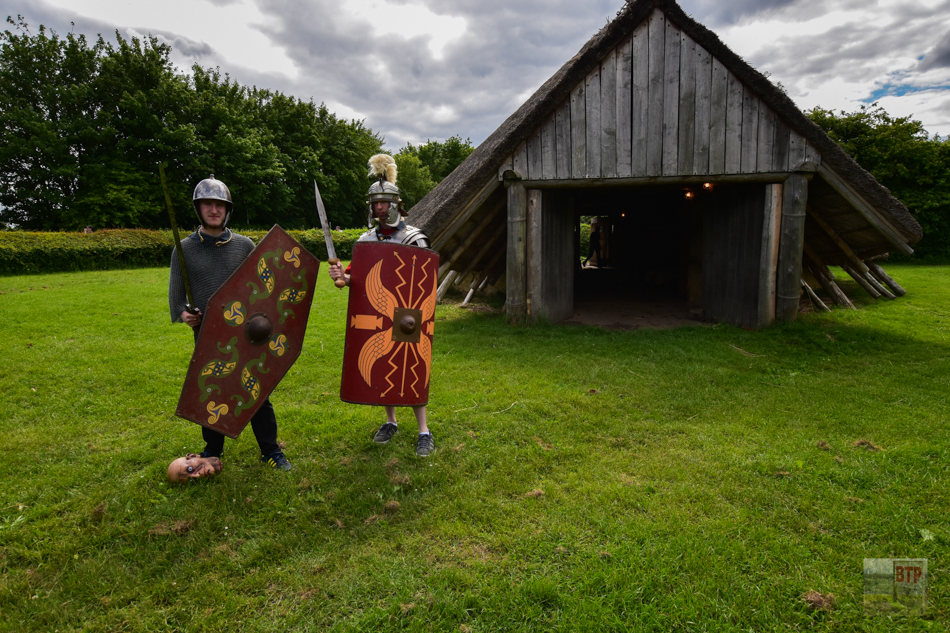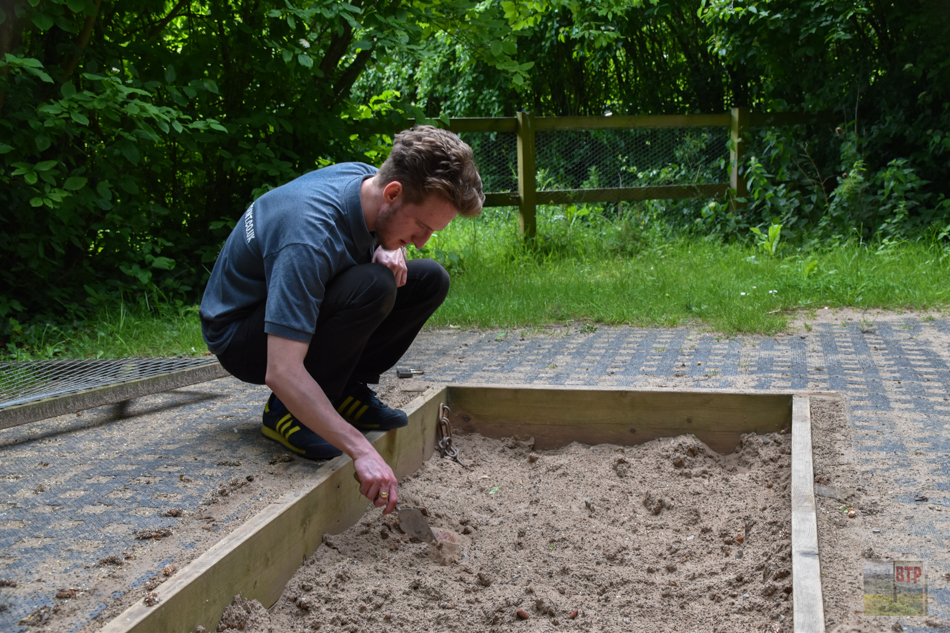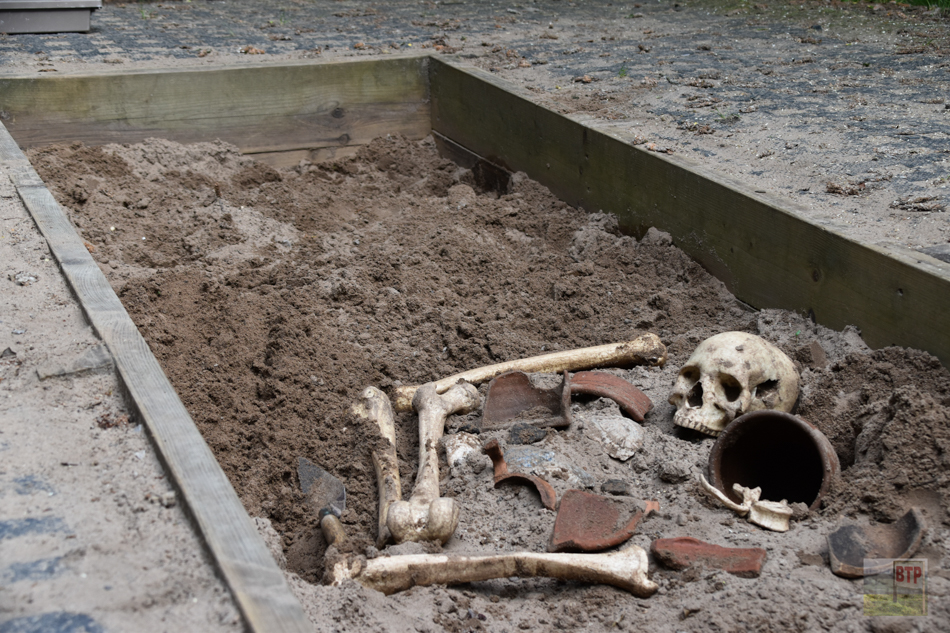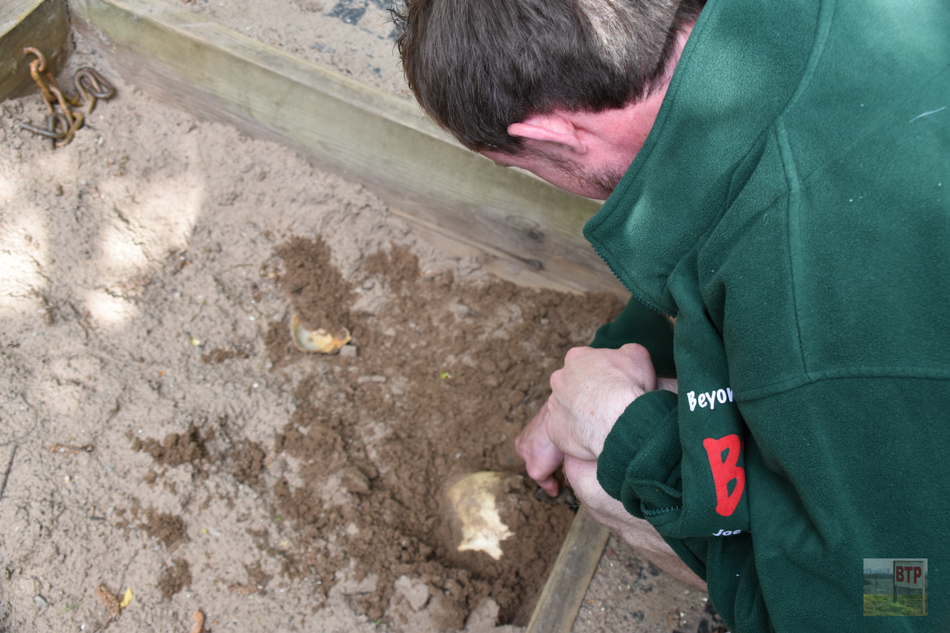What is Hadleigh Iron Age Roundhouse?
Hadleigh Country Park is open to a whole host of historic sights – from the widely-popular Hadleigh Castle to the hidden remains of a heavy anti-aircraft battery and the Salvation Army home colony. One such tucked away treasure is the replica Iron Age roundhouse located behind the Olympic Park cycling track and Sports Centre. It was built using mostly-contemporary building techniques and materials over three years and was opened to the public in 2007. It features a conical thatched roof that extends from the ground via wooden posts, and wattle-and-daub walls (mud mixed with straw over a woven stick fence). Although there wasn’t an actual roundhouse on the exact site back in Iron Age Hadleigh, its believed the replica could simulate one of many roundhouses built by Celts who did inhabit the local area nearly two-thousand years ago. Its design has to be speculated – especially the appended entrance, due to limited evidence available. However, it draws inspiration from other replicas across the country and presents a highly immersive example of Celtic life.
What can I see at the Roundhouse?
The furniture of the roundhouse exhibits incredible attention to detail – with fur beds, painted shields, cutlery, and apparatus all based on contemporary styles. The centre of the roundhouse showcases a fire and pulley-operated cooking pot, whereas other ‘living history’ working elements stand around the outer living quarters such as a quern stone for grinding corn. When we visited we were allowed to operate these thanks to ranger Ansgar Aldridge who gave us free-reign of the roundhouse for a short while.
The roundhouse is used today to educate visitors on Celtic life around the turn of the year AD and accommodates school-trips. The roundhouse and associated outbuildings are kitted-out with contemporary arms and armour of not only a typical Celtic warrior, but also that of a Roman legionnaire. These are occasionally showcased to demonstrate the tensions which threatened the traditional Celtic way of life following the Roman Invasion of Britain in 43 AD. Whilst some Celtic settlements welcomed the more ‘advanced’ Romans, many were highly suspicious of them and often physically fought one another. The roundhouse also sometimes houses educational visits featuring the Anglo-Saxons who ruled Britain several-hundred years after the Celts. At the back of the roundhouse site there is also a labelled Saxon herb garden and a mock archaeological dig were children can use archaeological techniques to try and unearth the story behind each pit.
You can visit the roundhouse exterior anytime although do see Hadleigh Country Park for information on opening dates of the interior which is certainly worth seeing.

